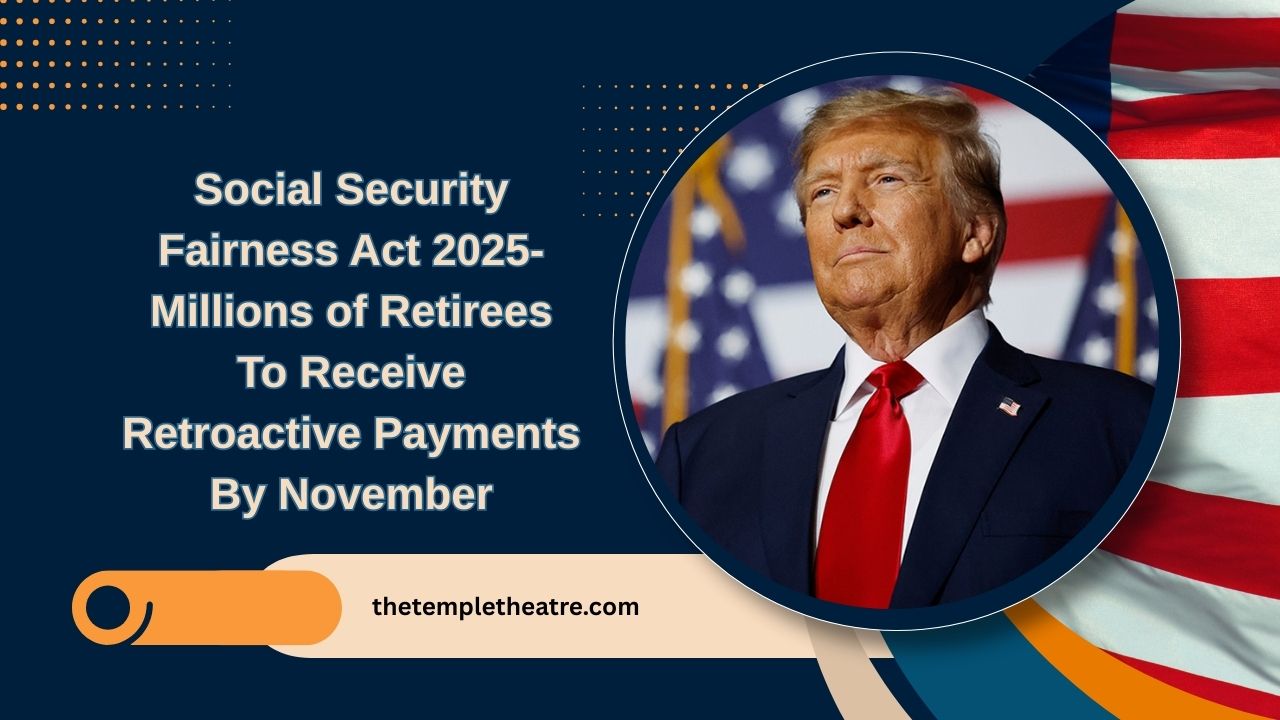In a monumental development for retirement security, the Social Security Fairness Act of 2025 has officially become law, promising retroactive payments to millions of U.S. retirees who were previously penalized under outdated provisions.
Passed on January 5, 2025, this legislation repeals two highly criticized rules—the Windfall Elimination Provision (WEP) and the Government Pension Offset (GPO)—restoring benefits and offering long-awaited compensation for public servants and others affected.
Understanding the Social Security Fairness Act of 2025
For over four decades, retirees with employment in non-Social Security-covered sectors like teaching, firefighting, or law enforcement faced reduced or eliminated benefits due to the WEP and GPO rules.
These individuals often paid into Social Security from secondary jobs, only to find their benefits severely limited.
The Fairness Act changes this by:
| Provision | Old Rule (Before 2025) | New Rule (After 2025) |
|---|---|---|
| WEP | Reduced retirement and disability benefits for those with non-covered pensions | Fully repealed – no more benefit reductions |
| GPO | Reduced or eliminated spousal and survivor benefits | Fully repealed – benefits now fully restored |
By repealing these rules, retirees can now receive full Social Security benefits based on their entire work history, regardless of employment sector.
Who Will Benefit From This Reform?
An estimated 3.2 million Americans stand to gain from this act. Key groups include:
- Retired federal, state, and municipal employees under systems like the Civil Service Retirement System (CSRS)
- Widows and widowers who previously lost spousal or survivor benefits
- Disabled individuals whose benefits were reduced by WEP
- Dual-income workers who split their careers between public and private sectors
These individuals will not only see increased monthly benefits, but also lump-sum payments to account for missed benefits from past years.
When and How Will Retroactive Payments Be Issued?
The Social Security Administration (SSA) is actively reviewing cases and automatically recalculating benefits. Most recipients do not need to take any action.
Key Details:
- Retroactive payments will be processed and distributed by November 2025
- Payments will be made via direct deposit or mailed check
- Lump-sum amounts will vary based on years affected and total benefits lost
To avoid delays:
- Update your banking and mailing information with the SSA
- Monitor official SSA mail or your MySSA online account
- Beware of scams—SSA will never request personal data or fees via phone or email
Why This Legislation Is So Important
The repeal of the WEP and GPO addresses a long-standing inequity that penalized millions of public servants.
For decades, retirees were shocked to learn that years of Social Security contributions were not fully counted, particularly if they also held non-covered jobs.
Now, with the Social Security Fairness Act of 2025, these injustices are being corrected.
The law represents a renewed commitment to fairness, acknowledging the service of teachers, police officers, firefighters, and other public employees who were previously denied full benefits.
The Social Security Fairness Act of 2025 is a transformative win for America’s retired public workforce.
By repealing the WEP and GPO, and issuing retroactive payments by November 2025, the federal government is taking a decisive step toward equity and financial justice in retirement.
Millions of retirees will now receive the full benefits they earned, restoring dignity and stability in their golden years.
FAQs
Do I need to apply to receive my retroactive payment under the new law?
No, the SSA will automatically recalculate and issue payments to all eligible retirees. No separate application is needed.
How will I know if I qualify for the retroactive payment?
If you were affected by WEP or GPO and are a retired public employee or surviving spouse, you likely qualify. The SSA will notify you directly.
How much retroactive payment can retirees expect to receive?
Amounts vary by individual. Some may receive several thousand dollars depending on how long their benefits were reduced and by how much.




